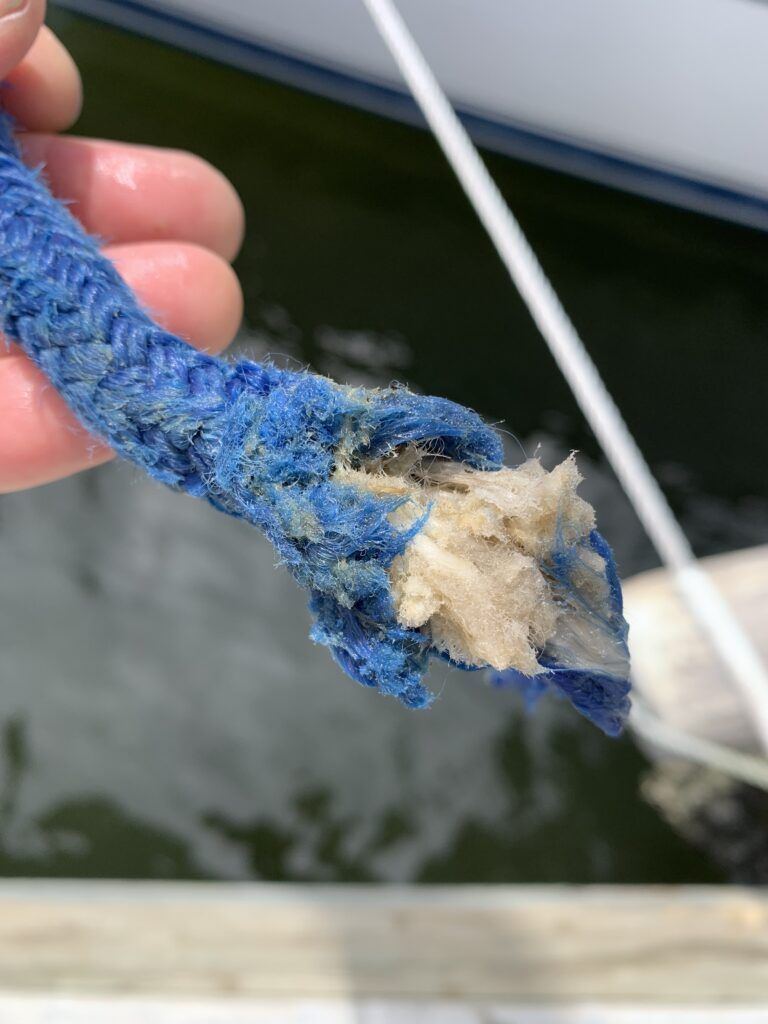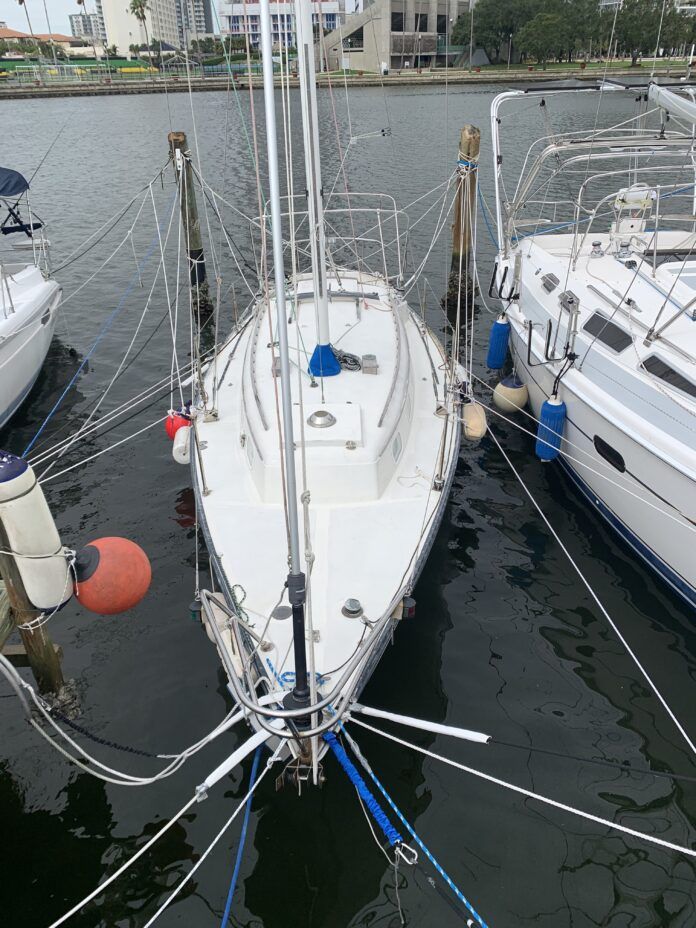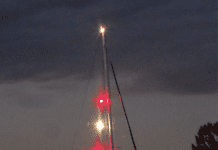Well, Hurricane Ian plowed south of the refuge-by-default for Opal, the 1971 Yankee 30 I spent a good part of last year working on. With no time to dash to a hurricane hole, I did the best I could with fenders, chafe gear, and lines at St. Petersburg Municipal Marina where the boat is berthed (left photo).
The official report labeled Ian as a Category 4 Hurricane and placed the eye as it went ashore near Sanibel Island, which is about 200 miles south of our location. We dodged the proverbial bullet—or bomb, more accurately—and I’m grateful for that. Our hearts go out to all those further south, who fared far worse and will have a long recovery ahead.

Even from that great distance, Ian packed enough punch to cause some damage to the marina docks, snap some lines, and scar some of the boats. One windward bowline on Opal recorded 425 pounds maximum load (middle photo). No boats sank, which is remarkable given the level of neglect throughout the marina. In fact, most of the dock damage that I saw was caused by poor seamanship by a few boatowners, who secured too-short lines to structures that weren’t meant for dock lines.
The storm reinforced several important lessons we’ve discussed in previous reports regarding dock lines, chafe gear, and fenders. But like every storm, Ian taught us a few more lessons about preparing for storms at older marinas with fixed docks.

I’ll be sharing more about the experience in a future report, but for the moment, I’ll emphasize one that often gets overlooked: Check the lines on neighboring boats. Had I not added an extra line to the boat adjacent to mine, it would have undoubtedly came down on Opal. The owner (his first sailboat), had used the same old breast-line he’d been using all year without chafe gear for the storm. It was a 5/8-inch double braid dockline (right photo) rated for 12,000 pounds and it clearly parted at a small fraction of that.
All in all, the experience reminded me why a marina is not a good choice for a hurricane refuge. This time we got lucky—very lucky.










































